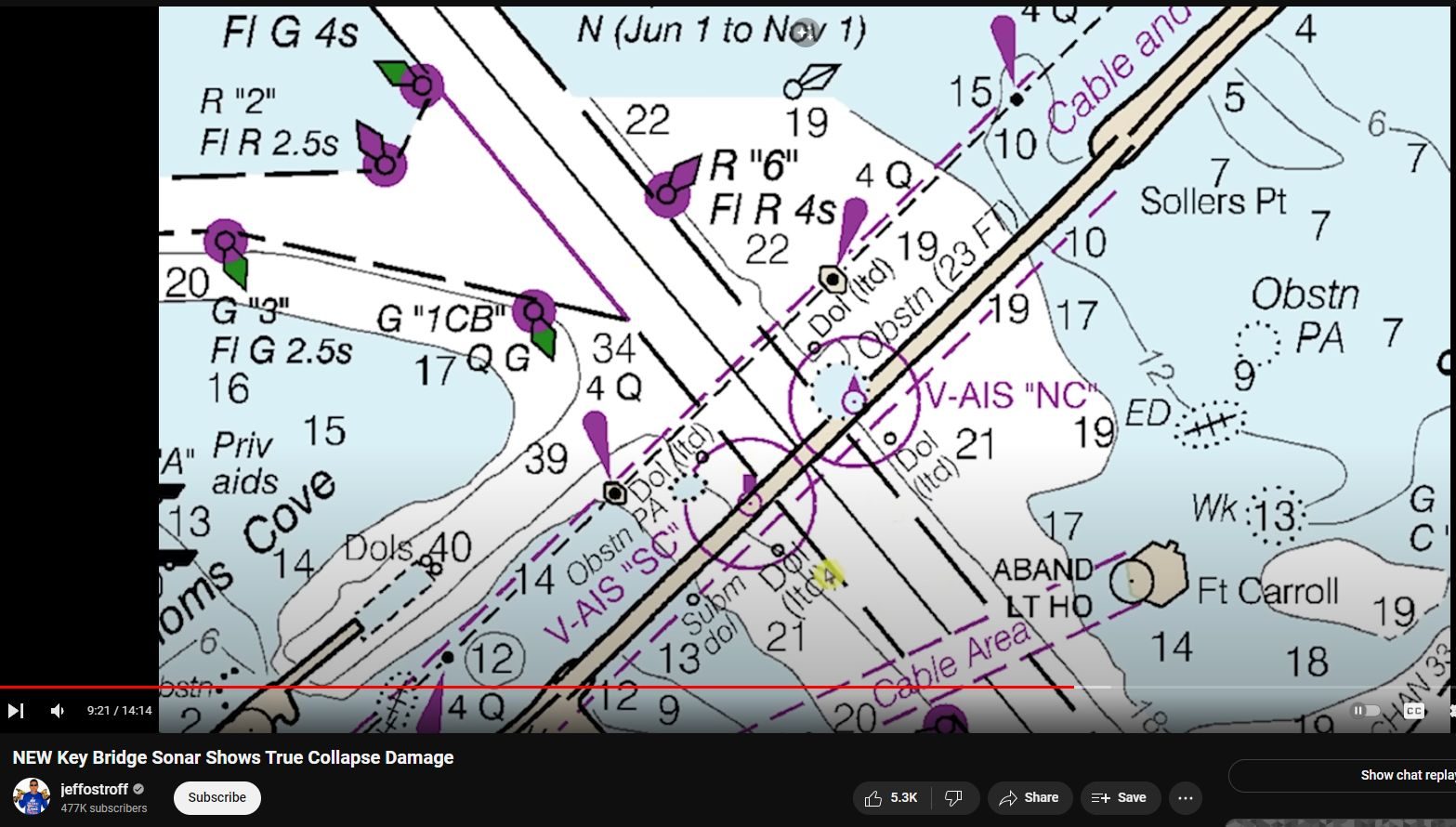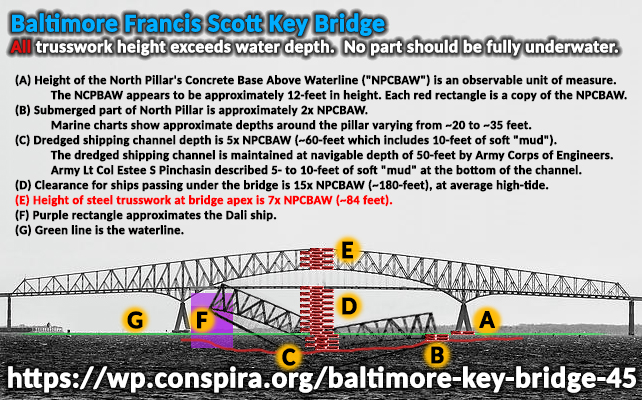Where did the steel go? All steel truss height exceeds water and mud depth – No part should be fully underwater
“This was a trillion-dollar costly event, ongoing, and yet all culpable persons remain unnamed, kept totally anonymous, with some reportedly having been slyly ‘escaped’ from the country! There is, in fact, zero publicly-verifiable evidence that any genuine Captain, Pilots or Crew ever existed; was DALI a remote-controlled ghost-ship on kamikazee mission from its outset? No waves nor sounds at all were recorded nor reported by any nearby persons nor cameras. No interviews exist with supposed survivors; “family and friends” etc interviews reveal ‘dupers-delight’ micro-facial-expressions with other hallmarks suggestive of fraud. Rampant is the extremely suspicious damage with blatantly visible, verifiable anomalies totally inexplicable (and ignored) by official theory or story. Grand payola galore is already underway with loads more coming. This is another audacious yet sublime crime, militarized from gov to salvage to rebuild. There was no rescue skiff on scene as required by OSHA. No horn blasts from ship warned of imminent collision. The ship departed despite dire electrical problems, illegal at any time and even more highly unusual in the cold, dark night-time (part #94, first ‘after-sundown departure’ in two years). Criminal was this manufactured event, through and through, and that’s before considering the absurdly high number of other anomalies including the complicit, worthless, ‘kept-pet’ mass-media…”
Part #91 adapted from a video comment
Index . Oddity List . Official Story . Summary
Where did the steel go ?
Official specific engineering information, blueprints or architectural drawings showing the exact height of the highest trusswork have so far eluded easily acquisition. Maryland Dept of Transportation (MDOT) or MTA (Maryland Transportation Authority) may have this information, as they are apparently the responsible parties for the operation and maintenance of the bright, but the detailed information does not appear to be available online.
The “deck height” or approximate ‘clearance for crossing ships’ is published (185 feet at average high-tide) as is ‘width of central span’ (1,200 feet).
Below photograph shows an approximate ‘plan view’ of the bridge from bay-side approach.
(A) The height of the North Pillar’s Concrete Base Above Waterline (“NPCBAW”) is an observable unit of measure. The NCPBAW appears to be approximately 12-feet in height. Each red rectangle is a copy of the NPCBAW.
(B) Submerged part of North Pillar is approximately 2x NPCBAW. Marine charts show approximate depths around the pillar varying from ~20.
(C) Dredged shipping channel depth is 5x NPCBAW (~60-feet which includes 10-feet of soft “mud”). The dredged shipping channel is said to be maintained at navigable depth of 50-feet by Army Corps of Engineers. Army Lt Col Estee S Pinchasin described 5- to 10-feet of soft “mud” comprising the bottom of the channel.
(D) Clearance for ships passing under the bridge is 15x NPCBAW (~180-feet), at average high-tide.
(E) Height of steel trusswork at highest portion is 7x NPCBAW (~84 feet).
(F) Purple rectangle approximates the Dali ship.
(G) Green line is the waterline.
When not being molten and/or dustified by Directed Energy Weapons, structural steel remains rigid and unbending. The comical-wilting (without cracks!) so prevalent among the debris is otherwise impossible outside of a blast furnace. Under natural forces such as collision (“allision”, when one entity is stationary), pressure, impact or other stress, bending should be minimal if present at all. The expected sudden cracking and shattering of rigid steel girders exposed to natural (non-DEW) forces appears R 4:16 in the Jeff Ostroff video showing a girder snap during lifting by “the claw” https://www.youtube.com/watch?v=XJHSfo2SLw8&t=416s The molten girders atop the Dali deck at the South Pillar, amidst the rubble near various strike-points, and also the wilted girders drooping from the North Pillar are all hallmark damage of Directed Energy Weapons.
BELOW: Expected sudden cracking and shattering of rigid steel girders exposed to natural (non-DEW) forces appears R 4:16 in the Jeff Ostroff video showing a girder snap during lifting by “the claw” https://www.youtube.com/watch?v=XJHSfo2SLw8&t=416s
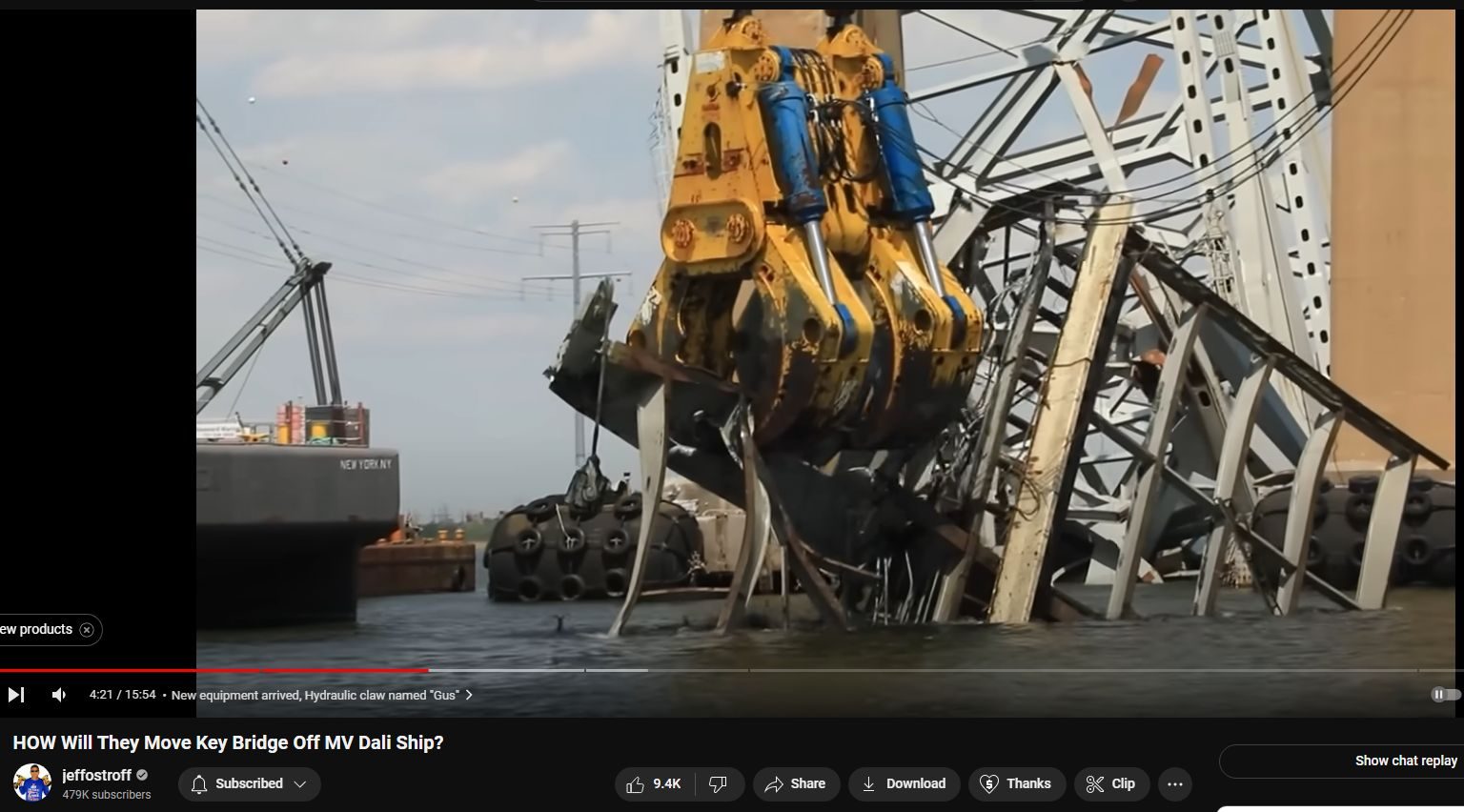
BELOW: SONAR images show much submerged steel trusswork is extremely distorted if not absent entirely. Particularly egregious is the missing material of what should be the 84-foot tall apex trusswork protruding 20- to 30-feet above the waterline at all points, depending upon softness of mud at channel floor.
Both the visible distortion and absence of material due to dustification are explained perfectly by Directed Energy Weapons and nothing else.
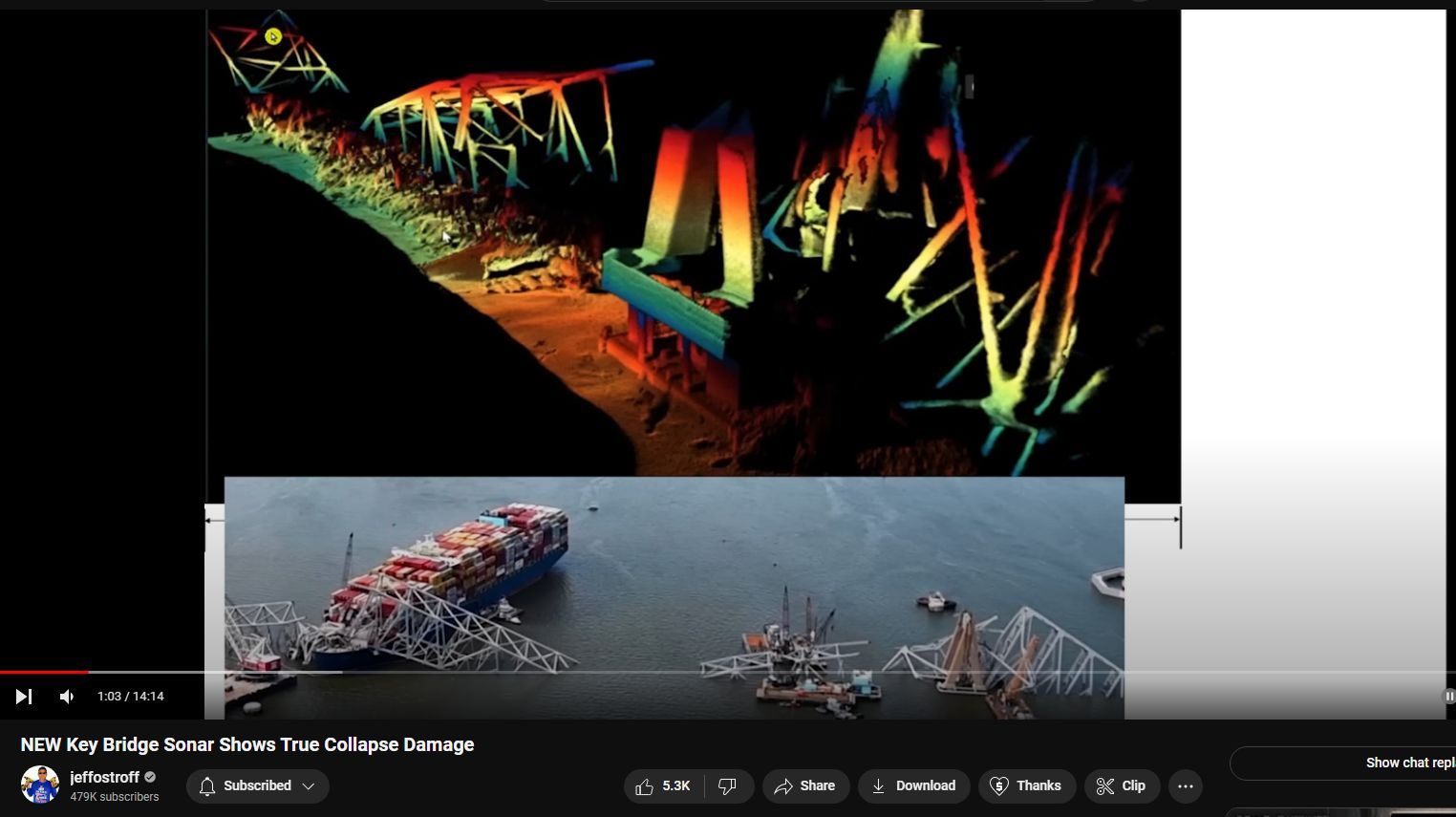
BELOW: Original SONAR image, rather dim and dark.
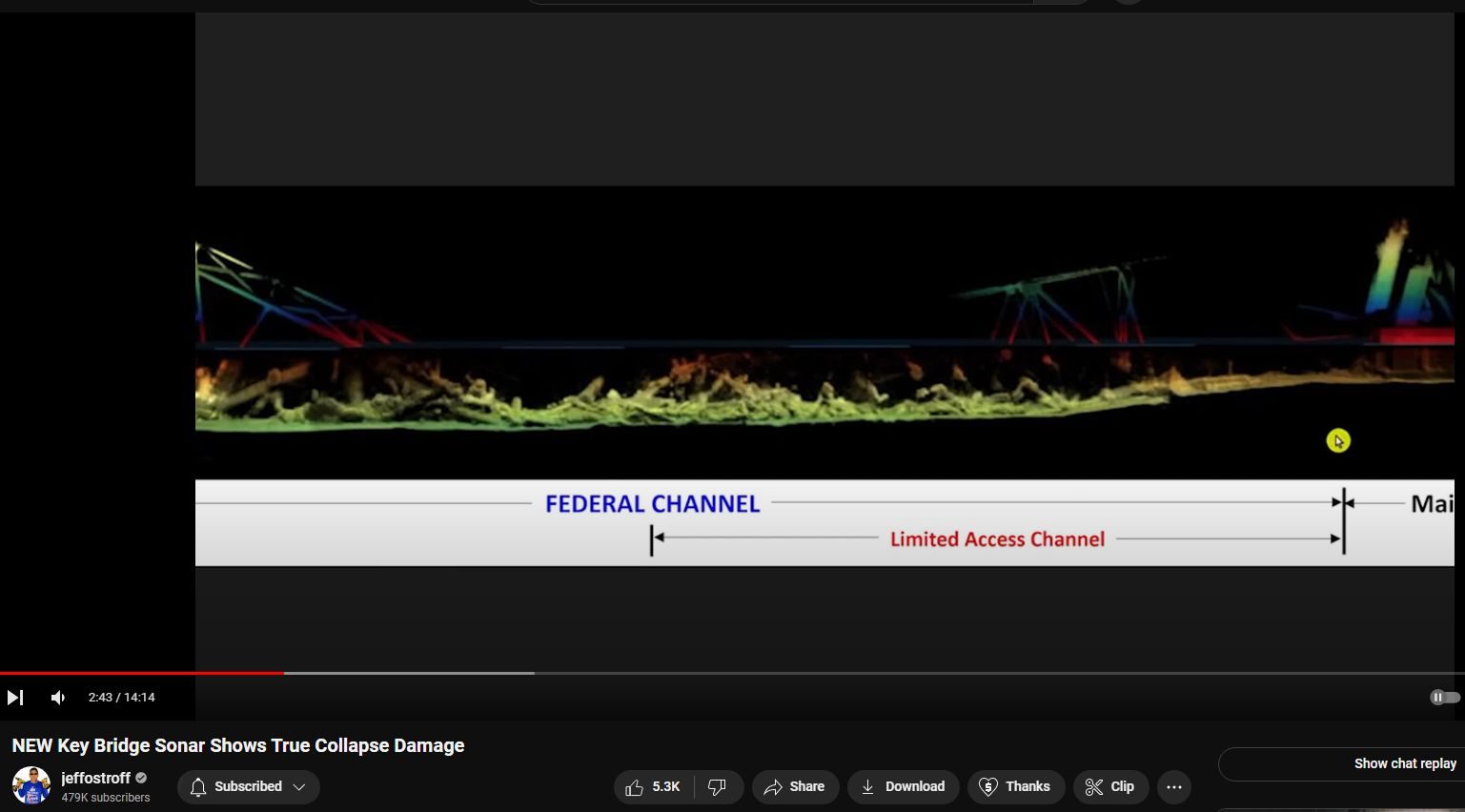
BELOW: 10x lightened version of image above. The massive steel trusswork is very evidently not present. Weak and misleading 911-trigger-word attempted explanations of “pancaking” and ‘disappeared into the mud’ do not describe the shocking utter absence of material, which must have been partly molten and mostly dustified (then settled or carried away by water currents) by Directed Energy Weapons; there is simply no other possible explanation. The lack of material to dredge also explains the otherwise ‘miraculous’ speed of clean-up.
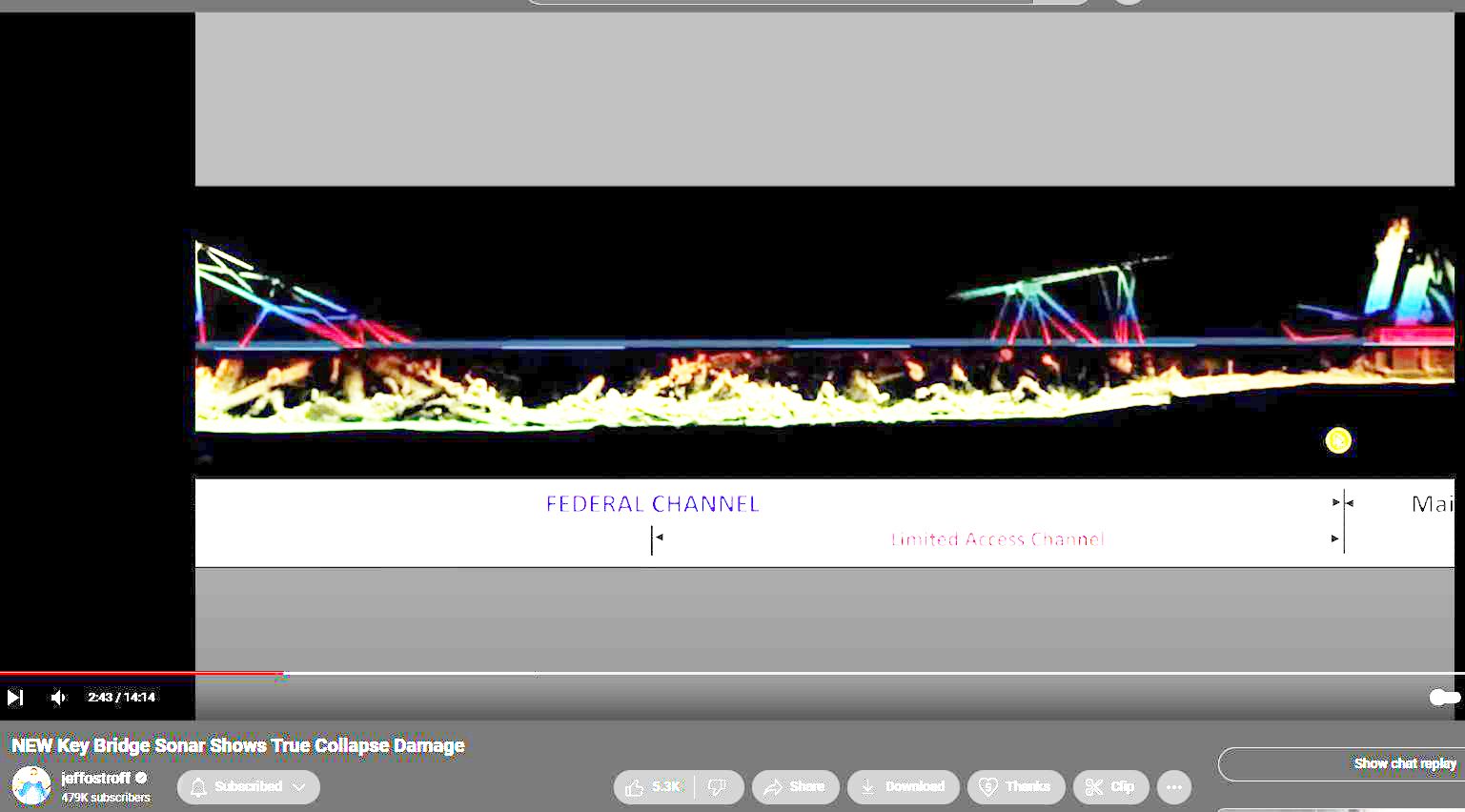
BELOW: Marine charts showing depth around North Pillar averages approximately 20 feet.
